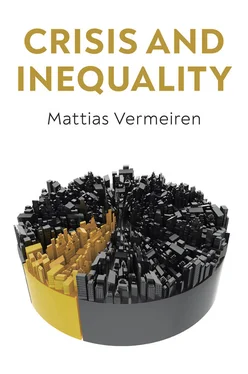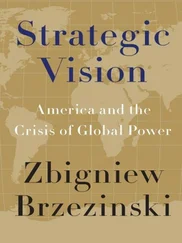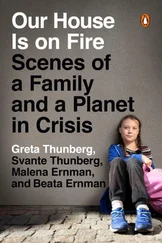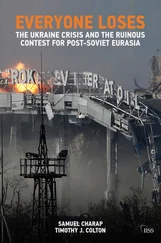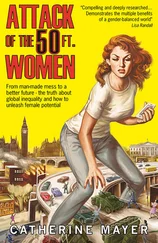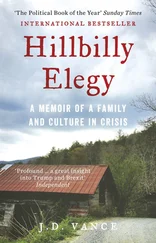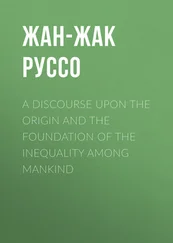4.1 Three worlds of welfare capitalism
4.2 Unemployment rate and contribution of exports to GDP growth (in percentages), 1960–2010
5.1 Average CEO compensation in the US economy, 1973–2013
5.2 CEO-to-worker compensation ratio in selected countries: actual vs ideal, 2012
5.3 Selected measures of corporate finance ownership, 1990–2010
6.1 Increasing banking concentration in the OECD: C5 ratio, 1985–99
6.2 Government support measures of financial institutions (in billion euros unless stated otherwise), October 2008–May 2010
6.3 National index of approach to credit, 2000s
7.1 Sectoral financial balances in selected OECD countries (in percentage of GDP), 1995–2007
7.2 Average annual change in nominal exchange rate and inflation, 1980s and 1990–8
1.1Stocks and bonds
1.2The market price mechanism
1.3Supply-side versus demand-side macroeconomics
2.1The Keynesian revolution in macroeconomics
2.2The demise of the Bretton Woods system
3.1The fiscal multiplier
3.2Instruments of the central bank
3.3The ‘policy ineffectiveness’ thesis: from monetarism to New Keynesianism
3.4Negative demand shock in sovereign bond markets
4.1Centralized wage-setting: principles
4.2Hartz reforms and labour market dualization in Germany
5.1Apple’s business strategy
5.2Capital markets
6.1CDO, SIV and ABCP
6.2Mortgage equity withdrawal: an illustration
7.1The balance of payments
In 2008 the world economy was shattered by the deepest financial crisis since the Great Depression of the 1930s (and, according to some criteria, even the severest financial crisis in global history). For more than a decade, capitalism in the advanced market economies has been in the throes of a threefold crisis. 1The global financial crisis was first and foremost a banking crisis stemming from the fact that private banks extended too much credit to households, creating bubbles in housing markets. When these bubbles collapsed, many large US and European banks had to be bailed out by their governments. Public debt ratios skyrocketed in the wake of the crisis as governments had to borrow massive amounts of money to save the banking industry and stabilize the economy, triggering a fiscal crisis in the weaker member states of the Eurozone. To reduce the public debt burden and regain the confidence of the markets, governments in the entire advanced capitalist world imposed drastic cuts in social spending and other harsh austerity policies on their citizens. This resulted in a crisis of the real economy , which manifested itself in persistently low economic growth (or even stagnation) and, in some countries, stubbornly high unemployment levels. The economic fallout of the lockdown measures in 2020 to contain the spread of the coronavirus further deepened these instabilities and plunged advanced capitalism into the worst existential crisis since the Great Depression of the 1930s.
The ‘Great Lockdown’ of 2020 came as an external, ‘exogenous’ shock to the advanced capitalist system. The structural causes of the global financial crisis of 2008, by contrast, were ‘endogenous’ to this system: what happened in 2008 has to be understood as an outgrowth of the financialization of the economy and the outcome of growing levels of income and wealth inequality. In almost all rich countries, since the 1980s the gains of economic growth were distributed unequally. In 2016, the share of total national income accounted for by just the top 10 per cent of earners (that is, the top 10 per cent income share) was 37 per cent in Europe and 47 per cent in North America (even higher than in Russia and China, where the top 10 per cent income share was respectively 41 and 46 per cent of total national income). 2From 1980, income inequality increased rapidly in North America, while inequality grew more moderately in continental Europe. From a broad historical perspective, the rise in inequality marks the end of a post-war ‘Golden Age’ of egalitarian capitalism. Many lower- and middle-class consumers in the United States and other Anglo-Saxon countries like Ireland and the United Kingdom increasingly had to borrow to maintain and finance their consumption patterns in the face of stagnating incomes. In this way, the rise in inequality contributed to the global financial crisis of 2008 by leading to an unsustainable rise in household debt. Fiscal austerity reinforces these dynamics of inequality by cutting spending on social programmes that primarily benefit the bottom half of the income distribution. Finally, high levels of inequality can be a cause of low economic growth and ‘secular stagnation’, as even mainstream neoclassical economists at the Organisation for Economic Co-operation and Development (OECD) and the International Monetary Fund (IMF) have increasingly acknowledged. 3
There is a growing consensus that excessive levels of inequality could also endanger the endurance of liberal democracy. Based on their analysis of recent public opinion data, political scientists Roberto Stefan Foa and Yascha Mounk come to a sobering conclusion:
Citizens in a number of supposedly consolidated democracies in North America and Western Europe have not only grown more critical of their political leaders. Rather, they have also become more cynical about the value of democracy as a political system, less hopeful that anything they do might influence public policy, and more willing to express support for authoritarian alternatives. 4
Since the 1980s, both voter turnout and trust in democratic institutions such as independent parliaments and judicial courts have sharply declined across the established democracies of North America and Western Europe: ‘As party identification has weakened and party membership has declined, citizens have become less willing to stick with establishment parties. Instead, voters increasingly endorse single-issue movements, vote for populist candidates, or support “anti-system” parties that define themselves in opposition to the status quo.’ 5An increasing number of recent studies claim that the rise in ‘populism’ in most Western societies is closely connected to the rise in income inequality, the stagnation of middle-class wages and growing economic insecurity linked to financial and economic globalization. 6
The economic instability of capitalism and its inherent tendency to fuel inequality are therefore topics that should be of interest to any student and scholar in social sciences. This book aims to deepen our understanding of these two central challenges of advanced capitalism from a political economy perspective. Political economy is a field of study that is based on the assumption that it is impossible to say much sensible about the economy and the functioning of ‘markets’ without taking into account the broader political and institutional context in which these markets are always embedded. It is a research tradition whose principal objective is to break down disciplinary boundaries between economics, political science and sociology and to ask basic questions about the distribution of resources in capitalist ‘market economies’. Thus, political economy applies Harold Lasswell’s classic definition of politics – the study of ‘who gets what, when and how’ – to the economy and is, as such, a research approach that is ideally suited to identify the political and social causes and consequences of rising inequality and instability.
Perhaps the best way to clarify the distinctive features of political economy as a field of study is by setting it against its main contender: neoclassical economics, which has become the dominant approach to study the economy in our contemporary society: it is the research tradition in which most economics students are nowadays educated. Neoclassical economics has become increasingly formalistic, developing mathematical models and quantitative methods that are completely detached from the social, political and historical context of economic dynamics in the real world. The global financial crisis exposed the failures of neoclassical economics. 7Understanding and deepening our knowledge of the global financial crisis and its longer-term causes and consequences should be central objectives in the social sciences, but neoclassical economics seems to have failed in reaching these objectives. In a famous event symbolizing this failure, Queen Elizabeth II of the United Kingdom asked, during a briefing by economists at the London School of Economics in 2008, why nobody had seen the crisis coming. Since then a growing group of students (and teachers) have started to complain that existing textbooks in economics had not done a sufficiently good job of explaining what exactly had happened and – even more importantly – why it had happened. In many countries, groups of students have demanded an overhaul in how economics is taught, with more pluralism and more emphasis on real-world problems like inequality and financial instability.
Читать дальше
